HowIDo2
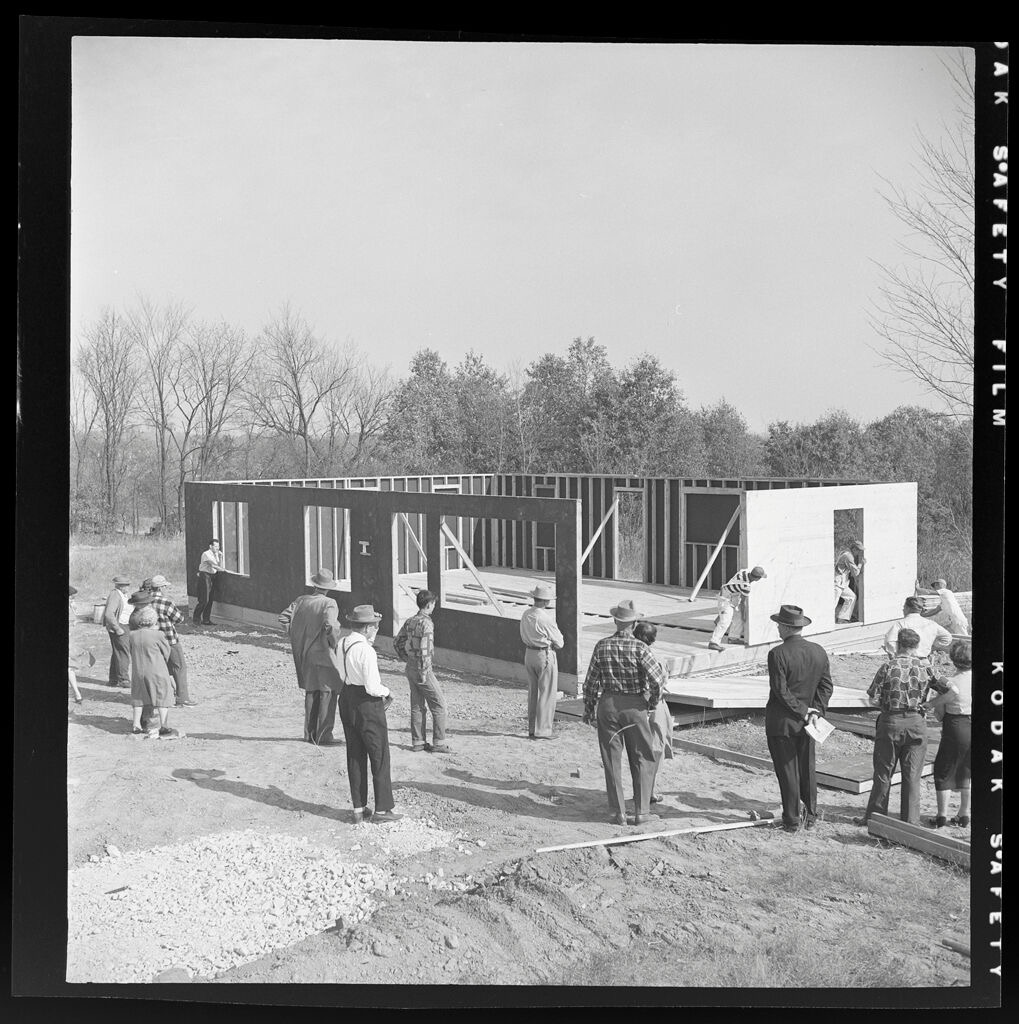
Jack Gould:
Untitled [workmen constructing new house] (1950)
“Another GoodNuff Story's published!”
Like with all activities, "finishing" does not necessarily mean done. I say I'm writing even though the writing might take up less than half the time I spend "writing." As I said in the last installment, the writing, initiated after lengthy context and content-setting work, occurs in timeless space. I must not think too much while writing lest I disrupt what might pass for flow. I learned long ago to separate editing from writing, for instance, because the two activities remain antagonistic and seem better left sequential. Once I've "finished" writing, I begin editing. If anything, I've increased my editing efforts in more recent years. I once over-revered my native voice, preserving my hems and haws as representing greater authenticity. In most realities, many asides make for difficult reading. Editing can streamline stream-of-consciousness writing, rendering it more palatable, understandable, and, therefore, more enjoyable to read.
I start my editing passes by slowing myself down. Timeless writing consumes no time, so it moves apace, at lightspeed, at least. It seems to take up neither time nor space until I wake from the trance required to produce it to find a pile of production steaming before me. I refer to myself as my own worst editor, but I seem to be stuck with myself. My production schedule, which requires that I post something every morning, does not allow a village to participate in producing, so I'm reduced to being my own worst writer, editor, as well as publisher. I compensate by s.l.o.w.i.n.g. waaay down when I shift from writing toward editing. I'm learning that editing cannot be timeless or quick. It demands that I drag my heels and avoid impatience.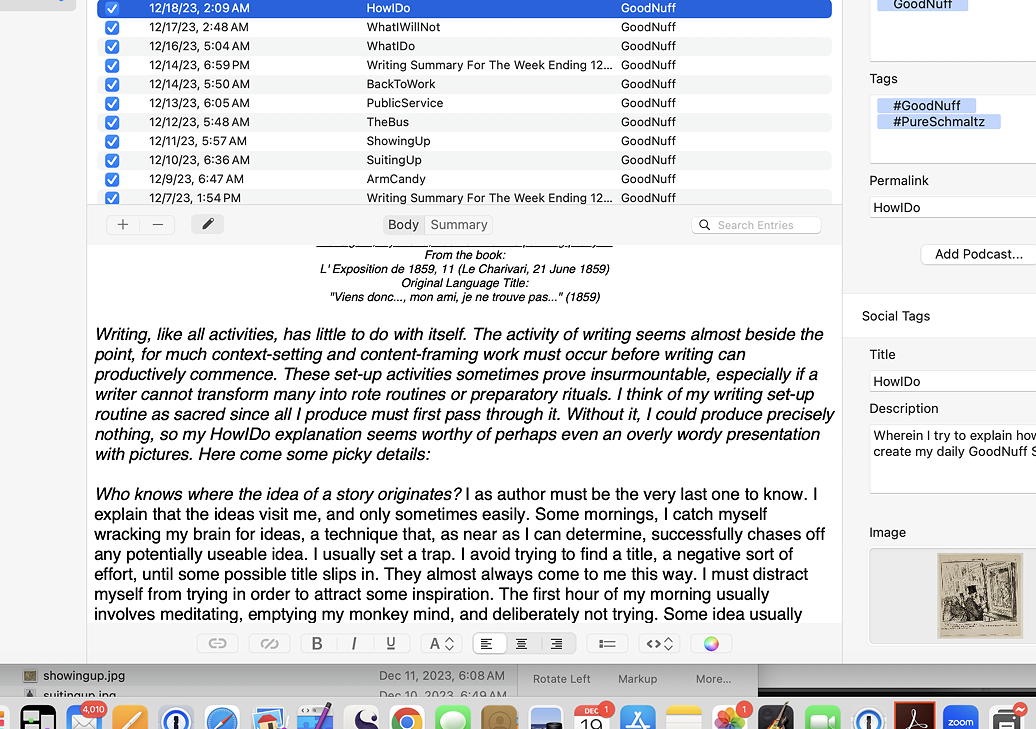
Story Ready for Editing
My first editing pass finds me crawling through the text. I'm reading it aloud because changing sensory modes helps me see the work in different lights. It was born in my head, so speaking the words renders them differently. I find spelling as well as grammatical errors. I work egolessly. I do not wound myself with my revealed stupidity. I have learned to expect that what seemed brilliant in my head will not seem nearly so clever when launched into the ether. Then, I direct my MacBook to read the story to me. This provides me another bit of distance within which I might switch perspectives and see the story differently. Editing seems to be all about seeing differently and making choices. I usually find some phrase before I finish my second editing pass that seems to encapsulate the whole story. I call this my Buried Lede. I copy this phrase to the top of my story, presenting it in bold and quotes. These serve as the keys to my stories.
Once I've read, listened, and corrected accordingly, I copy and paste the entire story into another medium, from its native RapidWeaver app into SubStack, to affect the final editing passes. I started using SubStack when my RapidWeaver threatened to crash. It's stabilized, but I acquired the habit of the last two edit passes, so I retain this step. It also enables me to publish to other social media domains like the ever-primitive LinkedIn and SubStack, which offers a subscription service that will notify subscribers whenever I post a fresh story.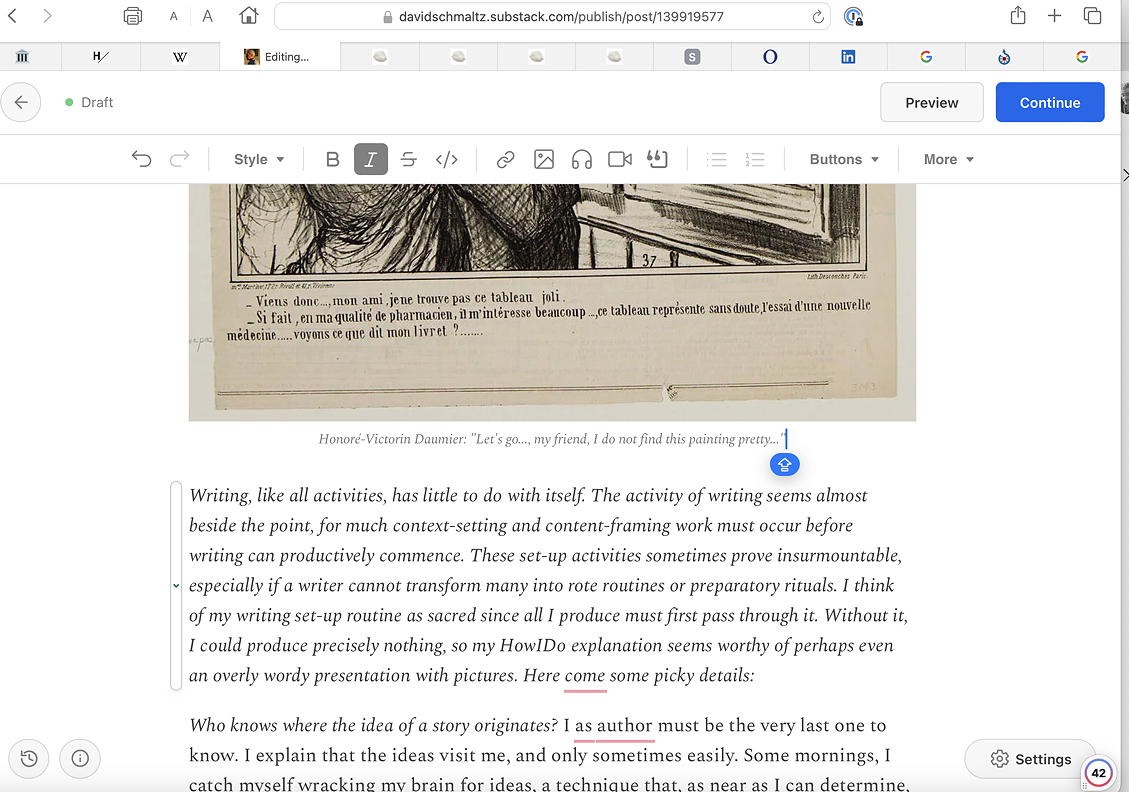
SubStack Rendering
SubStack provides another element that has become critical to my writing. It allows me to pass my story through an Artificially Intelligent agent called Grammerly®. (Grammerly does not work in RapidWeaver, the app where I write my stories.) Grammerly suggests corrections to my grammar, allowing me to choose which I'll include in my work. [Note the circled 42 in the bottom right-hand corner of this display. That’s Grammery’s way of telling me that it has found forty-two anomalies in my freshly copied story.] To preserve my voice, I reject more than half its suggestions. It does know the generally accepted rules for comma use, which I will never be able to assimilate, and notices when I should have cracked the old thesaurus. I tend to reuse the same description over and over and over again like I just did then. I no longer consider my work properly edited if I haven't passed it through Grammerly's inspection.
Once Grammery's had its way with it, I direct my MacBook to read the result to me one final time before I copy the now-finished story back to RapidWeaver for publication. The last few steps occur in a dizzying fashion. The SubStack version of the story is finished except for a brief introduction, which I will create in a PureSchmaltz Private Facebook Group posting and then copy over to SubStack.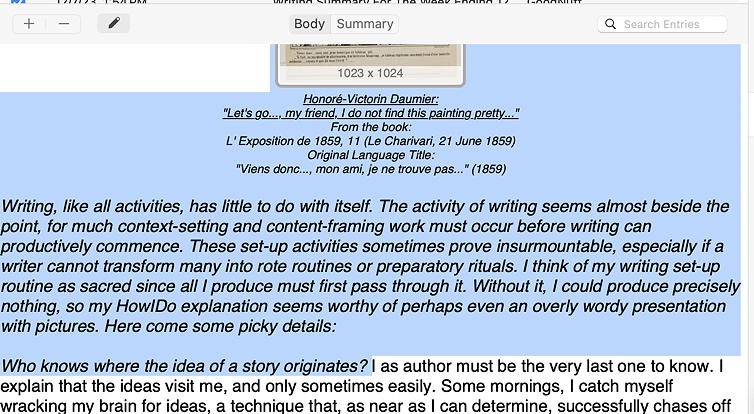
Copying Portion of Story for Publication
The final steps become exacting and do not lend themselves to pictorial representation. There's much copying and pasting. I recreate the illustration caption twice during this process, once for SubStack and another for Facebook, to present the proper links to the Wikipedia artist description and the source site's documentation because preserving and presenting these are important to me. Copy and paste do not preserve links, unfortunately.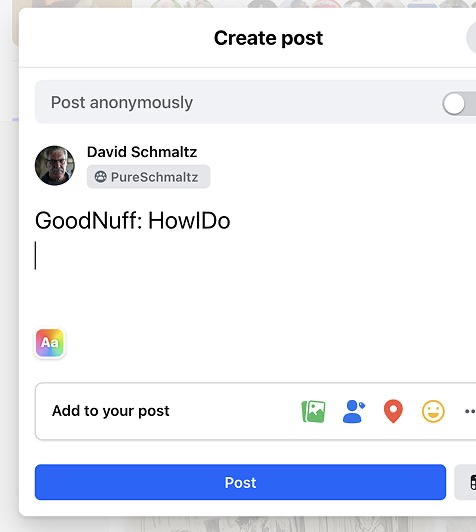
Creating FB Post
I save the changes I've pasted from the Grammerly copyedited story version into the RapidWeaver version while preparing the Facebook notification. I've kept a template for these notices in a RapidWeaver feature. I copy and paste these in two steps, filling in the resulting blanks with more copying and pasting; these include switching between Safari and Chrome. I have to keep six or seven different apps open to affect a single publishing.
Copying FB Posting template
I create the one or two-sentence intro after setting RapidWeaver to publishing. RapidWeaver's an upload effort; the master file is several GB, so publication requires five to ten minutes if accomplished at 5G speed. While waiting for that to finish, I Grammerly check the Facebook introduction, copy that to SubStack, and then publish that version to the web. This takes a second. I then copy the link to the Facebook Introduction template after "Or, find it in my PureSchmaltz Substack Library:" I open LinkedIn, then paste that link into a fresh posting, uploading the image and copying over that introduction from the SubStack copy of the story. LinkedIn is a minor medium for my work, though it produces a few dozen views weekly. It only takes a minute to update it. Once that's done, I exit LinkedIn until the next day. I'm a drop-the-link-and-leave visitor there because it lacks substance.
About this time, I'll receive notice that RapidWeaver's done publishing the story. I'll go into Safari and open a link to my blog to open the latest story. I'll copy the link to my Facebook introduction template under "Find the rest of this Story at my PureSchmaltz Blog:" and then post the intro to Facebook. There, I'll quickly "pin" that story to be featured in that group and "unpin" the day before's story to unfeature it. Then, I confirm that the links to the SubStack and the RapidWeaver version work before rereading the story in its fully formatted PureSchmaltz published form. That's it. Another GoodNuff Story's published! It’s six-thirty in the morning by then. My work’s done.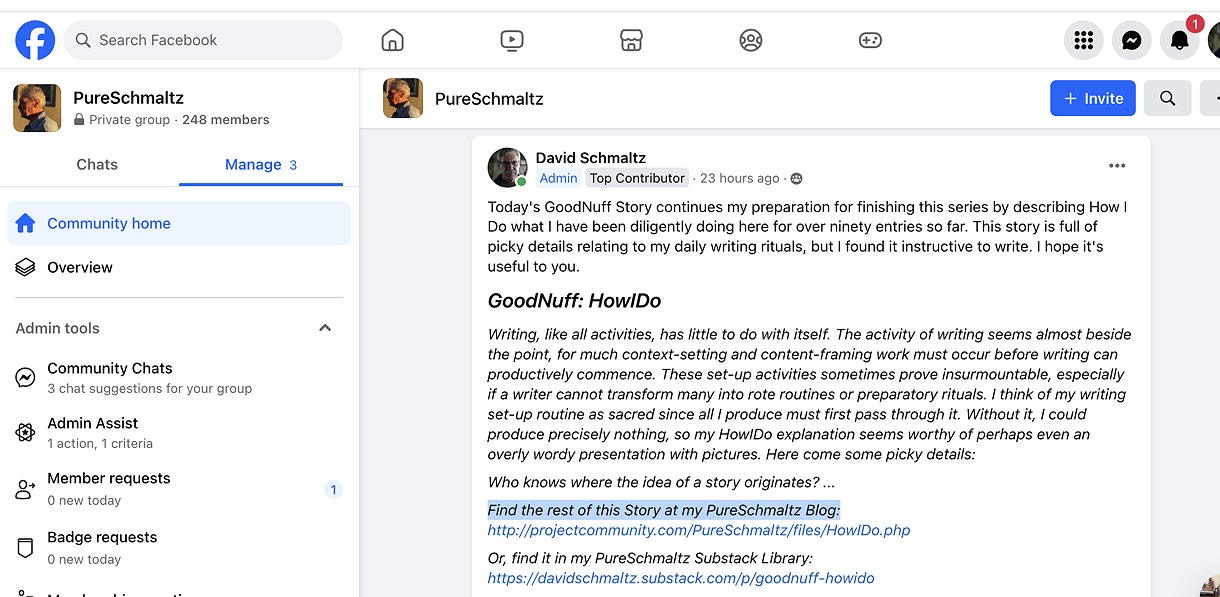
Intro Published Into Facebook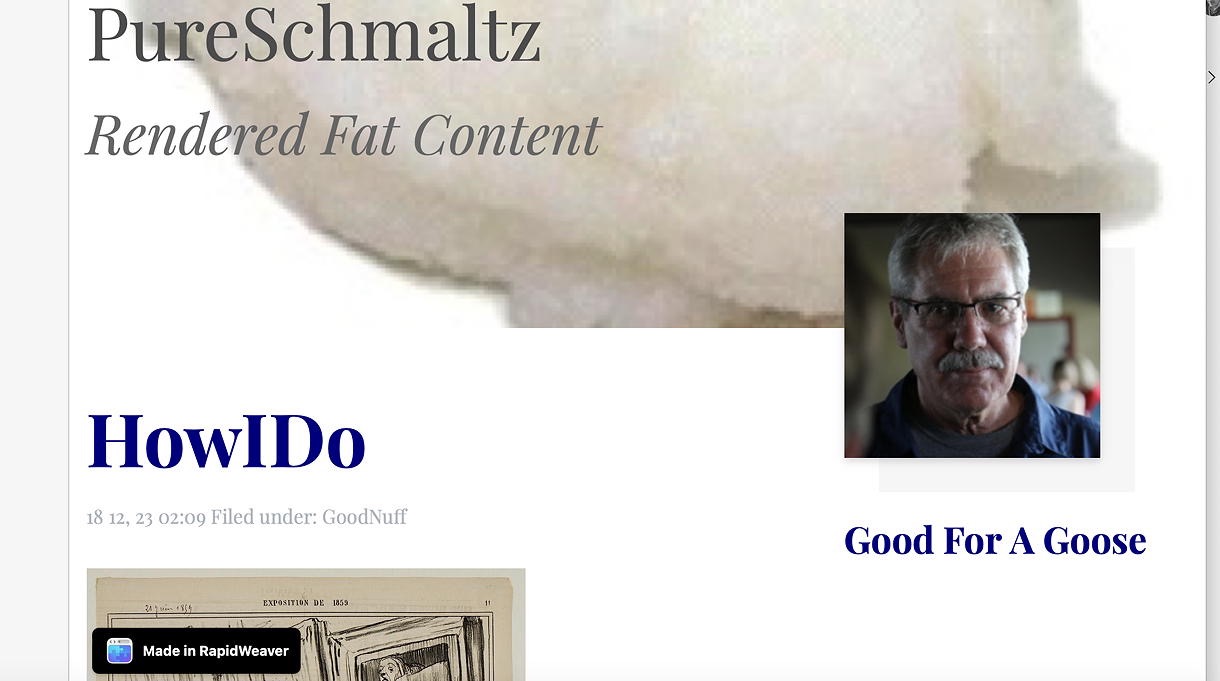
Final Published Into PureSchmaltz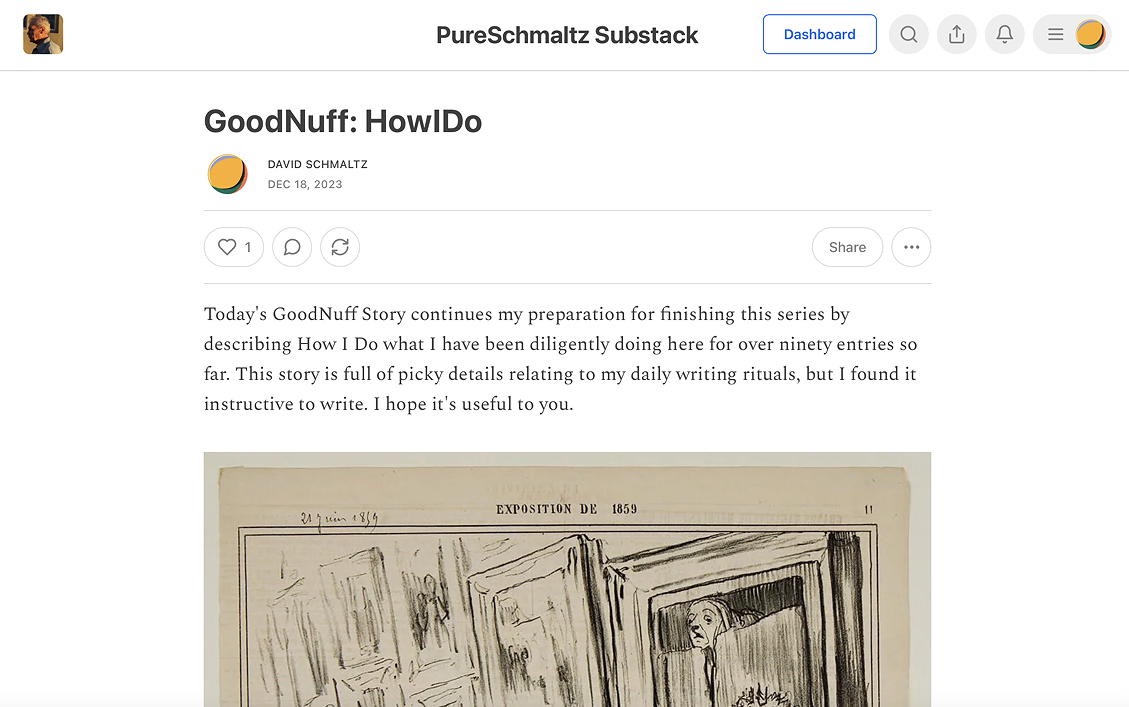
Final Published Into SubStack
©2023 by David A. Schmaltz - all rights reserved


